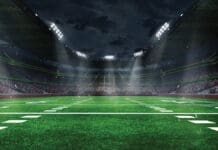By Chris Balzar
 Say goodbye to winter and hello to spring. The official first day of spring is March 19 and summer will follow close behind. If you are looking to save energy and money this spring, here are some tips:
Say goodbye to winter and hello to spring. The official first day of spring is March 19 and summer will follow close behind. If you are looking to save energy and money this spring, here are some tips:
Switch to LED lighting
Consider replacing your incandescent bulbs with LED bulbs, which operate at a lower wattage and produce much less heat. LED bulbs use 75% less energy and last 50 times longer than incandescent bulbs, saving you money on electricity and replacement costs. A 6 -10 watt LED bulb is comparable to a 40- 60 watt incandescent bulb. In fact, 90% of the energy used to light an incandescent bulb is heat and only 10% produces light wasting energy and produces unwanted heat in your home.
Lower water heater temperatures
Many of our water heaters are set to 140° from the manufacturer. Lowering the setting to 120° will save energy and money. When showering, most people start with the hot water turned all the way up and then add cold water for a comfortable temperature. By doing this, you are cooling the hot water which you spent energy and money to heat. Lowering water heater temperatures saves energy and money. Also, by switching on bathroom fans when showering will suck out the hot and humid air from your shower, so your air conditioner doesn’t have to work as hard.
Leaky faucets
My faucets don’t leak. Are you sure? One way to find out is to put a dry cup under the faucet in the sink overnight, when not in use. In the morning check the cup and if there is water in it, your faucet leaks. Well, my faucet only drips a little and I’m not really worried about it. Even the slightest of drips waste energy and costs you money. Let’s say you have a faucet which drips once every two seconds. It’s hard to be precise on volume so we are going to estimate the drip volume at ¼ ml. One gallon contains roughly 3,785 ml. Our leaky faucet will waste approximately 2.5 gallons of water per day and approximately 912 gallons of water per year. Now think if you have two or more dripping faucets. Faucets can easily be fixed and some manufacturers will send you replacement parts for free, you just have to ask.
Ceiling fan directional settings
Most, if not all ceiling fans have a directional setting. This setting is normally a small switch located on the side of the fan motor. In the spring and summer, the fan should spin in a counter clockwise direction to push cool air downward. In winter, fans should move in a clockwise direction. Using ceiling fans can save energy by making you feel cooler. Ceiling fans do not actually cool rooms, they make you feel cool by producing a breeze over the skin which evaporates the moisture on our skin making us feel cooler. By using ceiling fans we increase our air conditioner setting a few degrees warmer which saves energy and money.
By just following a few simple steps you can increase your comfort and save energy. It is always a good idea to consult with a professional when looking to be more energy efficient when it comes to larger projects. The DOE (Department of Energy) states that properly insulating and weatherizing your home can save up to 30% on heating and cooling.
Chris Balzer is Founder and President of Emerald Coast Energy Solutions which is a Smile Provider Company. We provide smiles to our customers after installing our high energy efficient products, increasing comfort and lowering energy bills. For more information on how to save this summer and become energy efficient, schedule an inspection by calling (850) 588-2870, visit www.trusteces.com or email wecare@trusteces.com and Beat the Heat.
































































